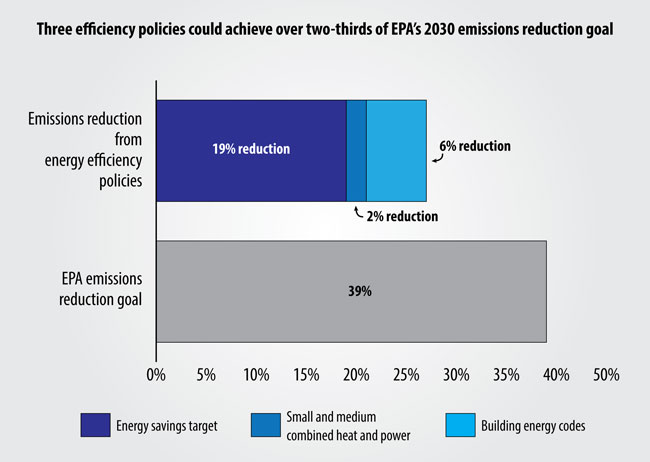Gregory E. Wannier
Deputy Director
On December 8, the DC Circuit scheduled oral arguments for a challenge to EPA’s waiver for California’s vehicle tailpipe emission standards for greenhouse gases. The challenge is the latest in a six-year battle over proper use and interpretation of the Clean Air Act, and represents a final effort by industry to mandate one national emission standard for vehicle GHG emissions.
The case revolves around §209 of the CAA and whether it can and should allow California to implement regulations adopted in 2004 to control GHG emissions from vehicles in the state. The first part of §209 states simply that no “State or any political subdivision thereof shall adopt…any standard relating to the control or emission from new motor vehicles.”[1] It was designed to prevent individual states from putting up too many individual barriers to pollution that could unfairly burden car companies with trying to comply with 50 different standards. However, the section also provides an outlet for more environmentally minded states to set stricter emission standards. This ability is explicitly centered on California: the second part of §209 states that the EPA Administrator “shall…waive application of this section to [California] if the…standards will be…at least as protective of public health and welfare as applicable Federal Standards.” However, no waiver will be allowed to California if it does not need higher standards to meet “compelling and extraordinary conditions.”[2]
As an initial point, two interesting pieces of history around this waiver make the current case particularly interesting, although they likely do not affect the final outcome of the case. One is that Administrator Johnson originally denied California’s waiver, in 2007 under President George W. Bush. This denial spurred its own challenge, which was pending before the DC Circuit until Administrator Jackson reversed Johnson’s denial in 2009 (under President Obama). As a result, the opposite interests are now suing EPA. The second interesting note is that California itself is not planning to use this waiver: it has indicated that it will accept newly stringent federal standards in lieu of its own starting in 2012. However, under §177 of the CAA other states may adopt California’s standards,[3] and six such states in the Northeast have indicated that they plan to do so until 2016. It is these states’ activities that in large part have motivated this administrative challenge.
The petitioners’ argument focuses on a textual analysis of §209. Pointing out that the waiver is only allowed where necessary to meet extraordinary conditions in California, they argue that it cannot apply in the context of GHG regulation because it is fundamentally a global problem with global solutions. According to their brief, each waiver decision must be treated in a vacuum, and on its own merits. Turning then to those individual merits, petitioners see nothing to justify an individual waiver: even if California is uniquely harmed by GHGs (which augment health issues associated with ozone accumulation in California’s polluted urban areas), they argue that California must show that local reductions in emissions will lead to verifiable local effects. This, of course, could not be shown, because California contributes only marginally to global emissions.
In its response brief, EPA first disagrees with petitioners’ characterization of the inquiry as being case-specific. Instead, EPA characterizes the waiver as being typical of the CAA’s larger purpose, noting that the CAA was designed specifically to take advantage of state innovation (in the design of SIPs, state application of BACT standards, elsewhere). In particular, California was selected so that it could be a “leader in experimenting with techniques for control of air pollution from automobiles.” This conclusion is strengthened, EPA claims, by the CAA Amendments of 1977. By authorizing waivers for California so long as its program was “in the aggregate” as protective as the federal program, they provided more flexibility for California to experiment and showed a clear intent for California not to be bound in its individual regulatory decisions to national activities.
EPA further argues that even under petitioners’ standards the waiver is justifiable. First, it says California’s regulations can be justified individually as part of its effort to curb ozone-related deaths in the region: although it may not be able to solve the problem single-handedly, California can fairly classify GHG reductions as part of its effort to deal with this localized problem. EPA cites Massachusetts v. EPA to support its contention that partial reduction can justify action, even if it does not fix the entire problem. Second, EPA states that it has in its (Chevron-supported) judgment, determined that California’s particular risks from climate change (including its large agricultural sector and severely threatened water supply) constitute compelling and extraordinary circumstances, and warrant particular measures if California should so choose.
The tension between the two parties’ analyses rests in their methods. Petitioners rely primarily on certain literal interpretations of the waiver provisions, whereas EPA looks to the larger meaning and structure of the Act to justify its position. Both raise valid arguments. GHGs are undeniably a global issue, and California’s problems, though large, are not even the largest in the United States (New Orleans, and even Lower Manhattan, face inundation from the ocean, and water supplies are tight across the West). Their interpretation of §209 (as allowing California to act only in extreme circumstances) would not seem to justify a waiver. However, if EPA’s depiction of the intent and meaning of the California waiver is correct, then it would be hard to deny a waiver here – California can fairly say that GHG controls are well within its larger pollution control program, and it would undoubtedly provide a useful testing ground for tighter vehicle fleet standards.
According to an amicus brief filed in support of EPA’s position by former Administrators William Reilly and Russell Train (both of whom served exclusively under Republican administrations in Presidents Nixon, Ford, and George H.W. Bush), EPA’s characterization is correct. In describing §209, this brief mirrors EPA arguments about legislative intent to allow California to experiment – and then argues that over 40 years of EPA practice supported, and indeed relied upon, this experimentation. One example given is that of the catalytic converter, which significantly reduced the toxicity of vehicle tailpipe emissions and where “a phase-in of catalysts [in California] during the 1975 model year…lay the necessary foundation for [national] use of catalysts in 1976” (quote from President Nixon’s first EPA Administrator, William Ruckelshaus). Another is the implementation of California’s Low Emissions Vehicles (LEV) program in the 1990s, which opened the door for national LEV standards soon thereafter.
Perhaps the most troublesome fact in the Administrators’ brief for the petitioners is that even Administrator Johnson’s original denial of California’s waiver in 2007 was done against the legal advice of virtually the entirety of his non-political EPA staff members. Internal memos suggest not only that Administrator Jackson’s 2009 decision to grant the waiver is justifiable, but that the opposite position (to deny this waiver) seemed unjustifiable to EPA’s own legal advisors at the time. If this is true, it appears to be a difficult case for the petitioners to win.
[1] 42 U.S.C. §7543(a)
[2] 42 U.S.C. §7543(b)
[3] 42 U.S.C. §7507



